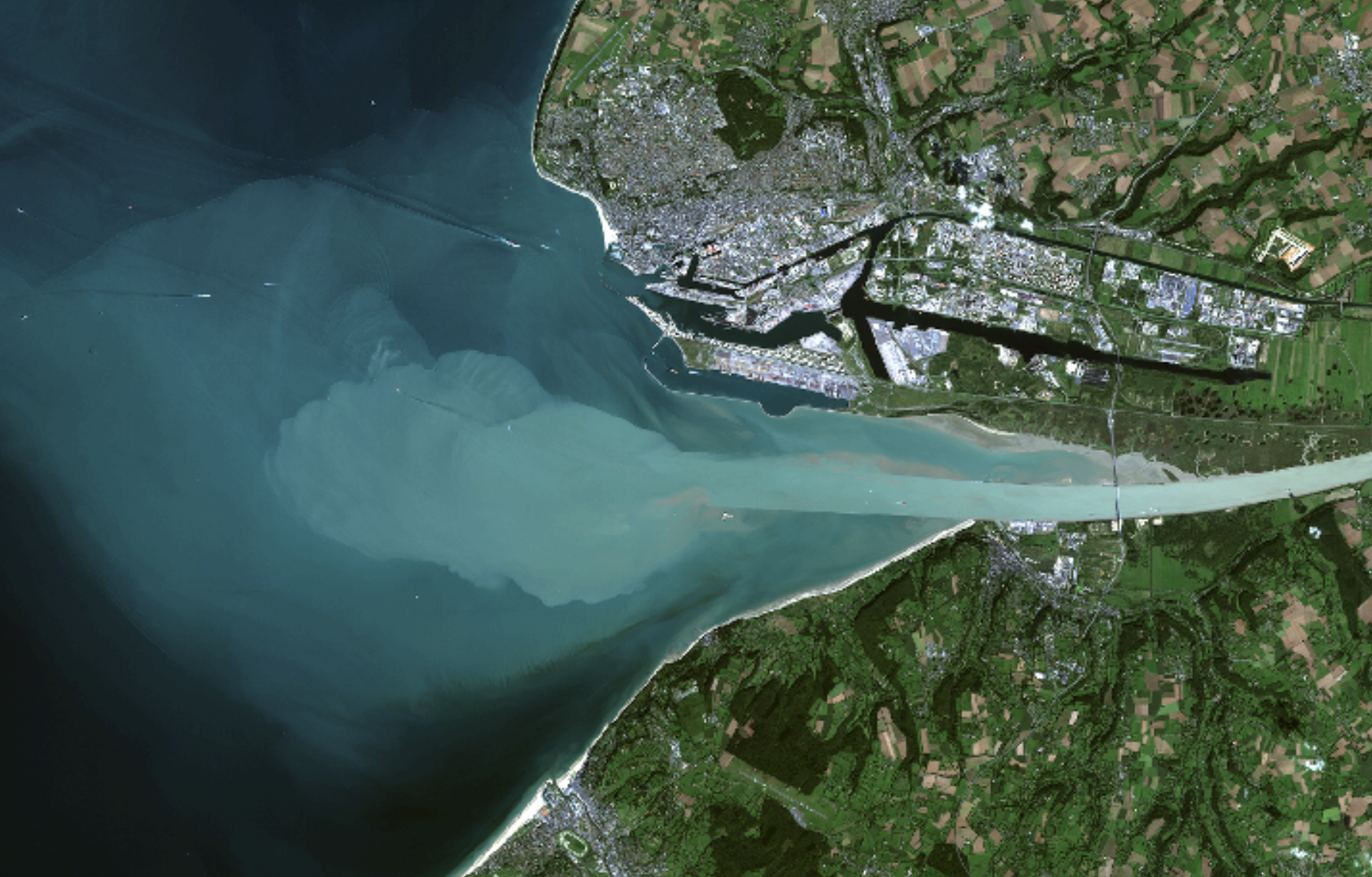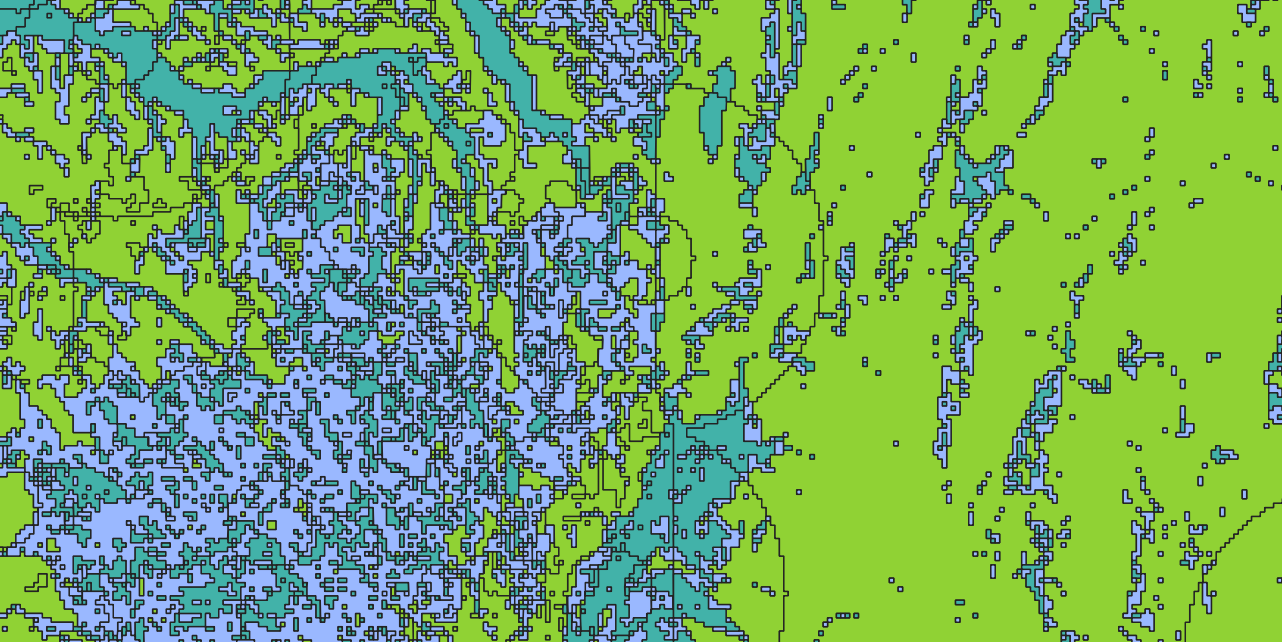
Estuary of the Seine river, aerial photography
Accessible on Géoportail
On the northern shore, Le Havre and its industrial port
On the southern shore, Honfleur and its touristic marina

Sevran, Ile-de-France
After the Second World War, many dwellings were destroyed, and the population was growing very fast, leading to a housing crisis (already!). The solution adopted by the French government was to build "grands ensembles," high-rise buildings that were conceived by architects partly influenced by Le Corbusier. Their mark on the urban structure is very distinguishable: a low land footprint and plenty of open space. The actual population density is similar to that of Haussmannian central Paris. Sometimes, they have interesting shapes, as seen here.
Data : Cadastre (land plots), BD Topo (buildings footprint), Openstreetmap

Sceaux, Ile-de-France
The distinctive chandelier pattern consists of expensive houses located adjacent to the prestigious Parc de Sceaux (blank space on the left-hand side). The other vacant spaces comprise a high school (at the top) and collective social housing, with all dwellings located at the same spot (on the right-hand side).
Data : Fichiers fonciers, locaux (cadastre)

Département de l'Ain, Auvergne-Rhône-Alpes
Data : Remontées de nappes (Groundwater)

Plan de prévention des risques inondation de l'Avranchin, Normandy
As expected, flood risk prevention plans align with the layout of the river. However, we can observe certain discontinuities that may arise from the political nature of the implementation process.
Data : Géorisques (PPR), Admin-Express (Department limits)